Lecture Notes from The Hong Kong Polytechnic University IC2129 TM2009 Course
Content
- Chapter 1: Safety Legislation
- Chapter 2: Personal Protective Equippment (PPE)
- Electrical Safety
Chapter 1: Safety Legislation
F&IUO, Cap. 59
– Enacted in 1955
– Coverage: Factories, construction sites, catering establishments, cargo
and container handling undertakings, repair workshops and other
industrial workplaces
– subsidiary legislations
Factory VS Industrial Undertaking
factory (工廠) means any premises or place, (other than a mine or quarry), in which articles are manufactured, altered, cleansed, repaired, ornamented, finished, adapted for sale, broken up or demolished or in which materials are transformed, and within the close or curtilage or precincts of which
(a) any machinery other than machinery worked entirely by hand is
used; or
(b) 20 more persons are employed in manual labour
;
(3) None of the provisions of this Ordinance shall apply to
(a) any undertaking which is not carried on by way of trade or for purposes of gain; or
(b) any agricultural operation.
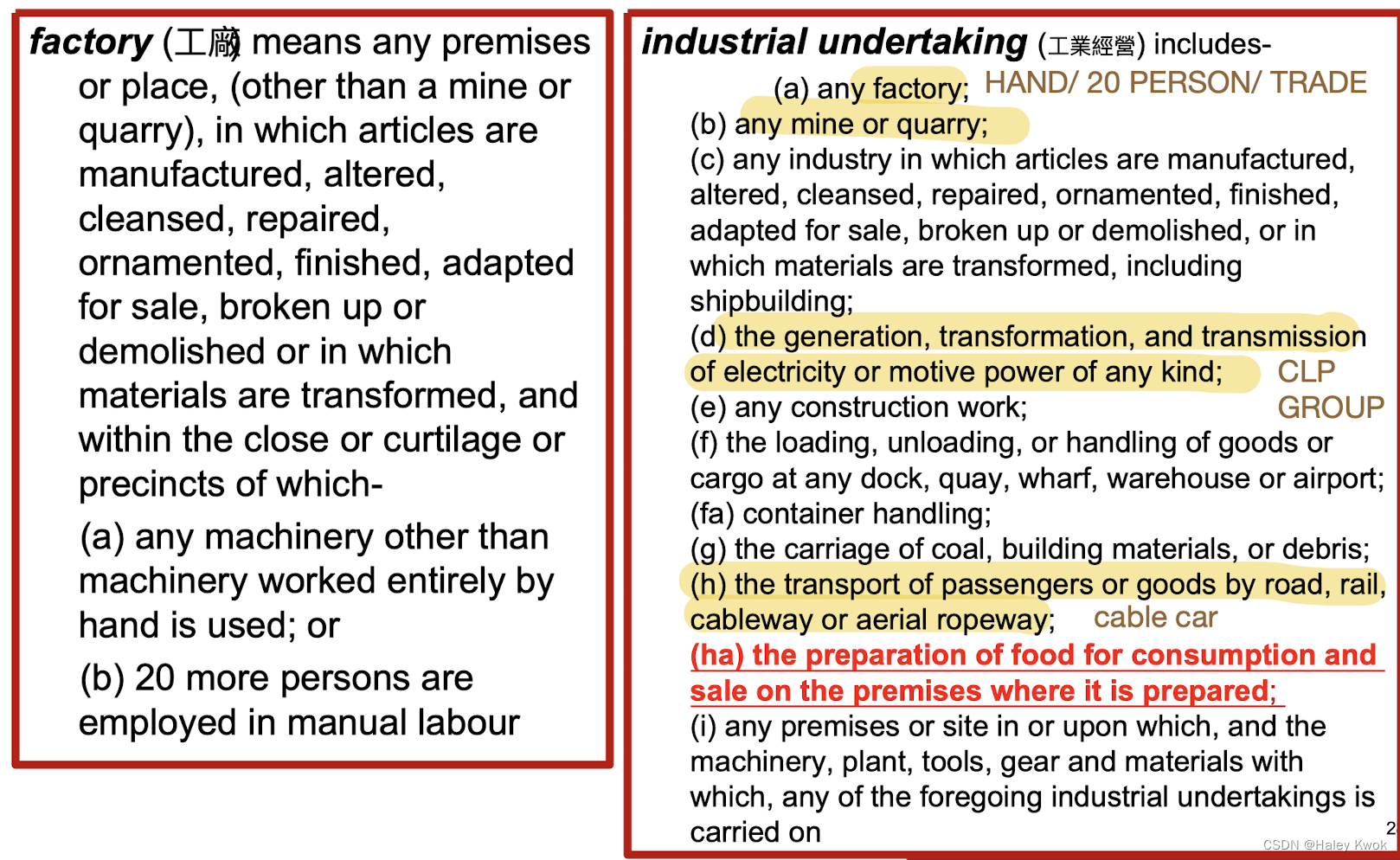
Industrial undertaking (工業經營) includes-
(ha) the preparation of food for consumption and sale on the premises where it is prepared;
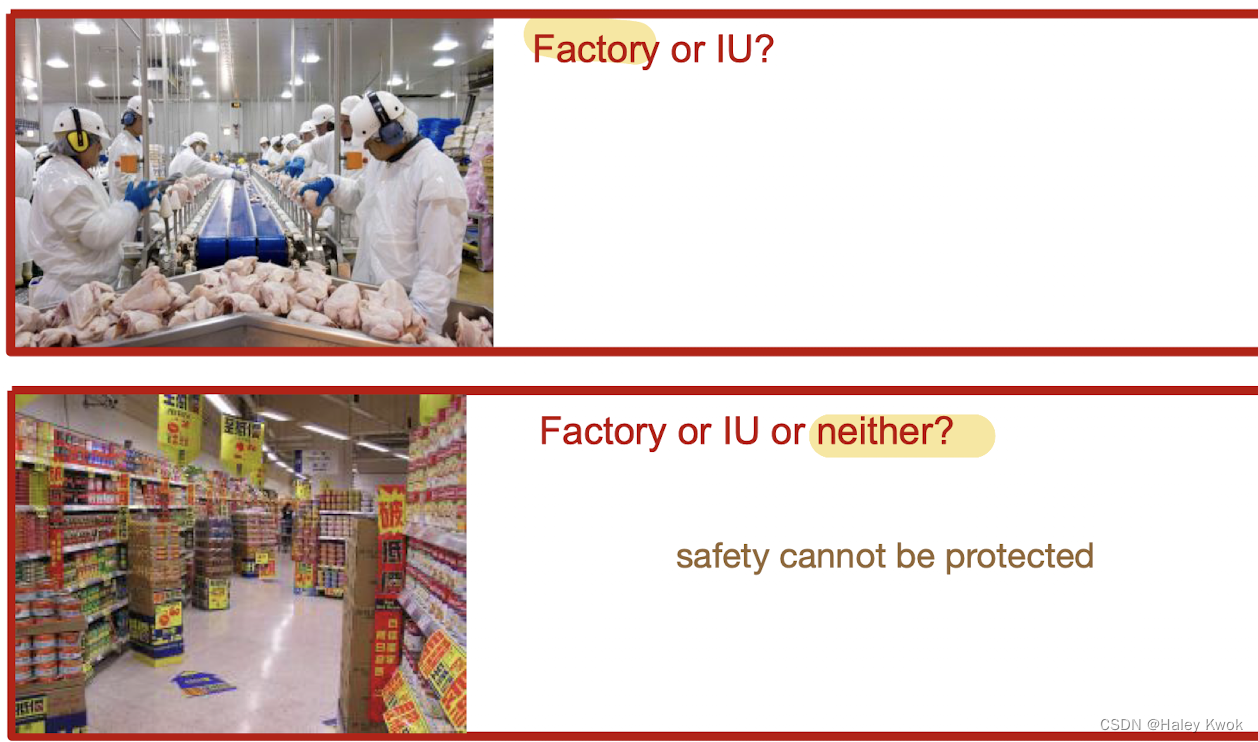
General Duties of Persons Employed
Factories and Industrial Undertakings Ordinance, Cap. 59, s. 6B:
(1) It shall be the duty of every person employed at an industrial undertaking while at work - (a) to take reasonable care for the health and safety of himself and of other persons who may be affected by his acts or omissions at work;
Occupational Safety and Health Ordinance, Cap 509, s. 8:
(1) An employee while at work- (a) must, so far as reasonably practicable, take care for the safety and health of persons (including the employee) who are at the employee’s
workplace and who may be affected by the employee’s acts or omissions
at work.
Proprietor 东主
(1) It shall be the duty of every proprietor of an industrial undertaking to ensure, –so far as is reasonably practicable, –the health and safety at work of all persons employed by him at the industrial undertakin
• Provide and maintain plant and systems of work
• Use, handle, store and transport plant or substances in safe manner
• Provide Information, instruction, training and supervision
• Maintain workplace; Provide and maintain access and egress
• Provide and maintain safe working environment
Contractor 承包商
• There should have proper systems for reporting of defects and for remedies of such defects, and
• the contractor should have well instructed the workers of such systems as required by section 6A(2)(a) and © of the Ordinance.
• He also failed to observe the statutory requirement of fencing dangerous floor edges.
Person Employed
• The first worker should have reported the failure of support for the guardrail to the management for immediate remedy.
https://www.labour.gov.hk/eng/public/os/A/GD6AB.pdf
• He would not only have carried out his duties as required by section 6B(1) but also saved the life of his workmate.
Safe System of Work
“Safe System of Work” is a formal safety procedure resulting from systematic examination of a task in order to
identify all the hazards. It defines safe methods to ensure that hazards are eliminated or risk minimised.
- Assess the existing task 2. Identify the hazards 3. Define safe methods 4. Implement the system 5. Monitor the syste
Interpretation of Workplace: OSHO, Cap. 509
– Enacted in 1997
– covers almost all workplaces
– places where employees work, including
offices, shopping arcades, supermarkets, hospitals, construction sites,
etc.
– subsidiary legislations
Occupational Safety & Health Ordinance Cap. 509:
• “workplace” (工作地點) means any place where employees work, but does not include any of the following-
(a) an aircraft or vessel when located in a public place;
(b) when a vehicle that is designed or used for the carriage of people, animals or goods is located in a public place, the seat or position normally occupied by the driver of the vehicle; f
© domestic premises at which the only employees are domestic servants;
(d) a place at which only self-employed persons work
-> OSHO, Cap. 509, governs the safety of employees working in Supermarket
General Duties of Employer and Occupier
Employers to ensure safety and health of employees (1) Every employer must, so far as reasonably practicable, ensure the safety and health at work of all the employer’s employees.
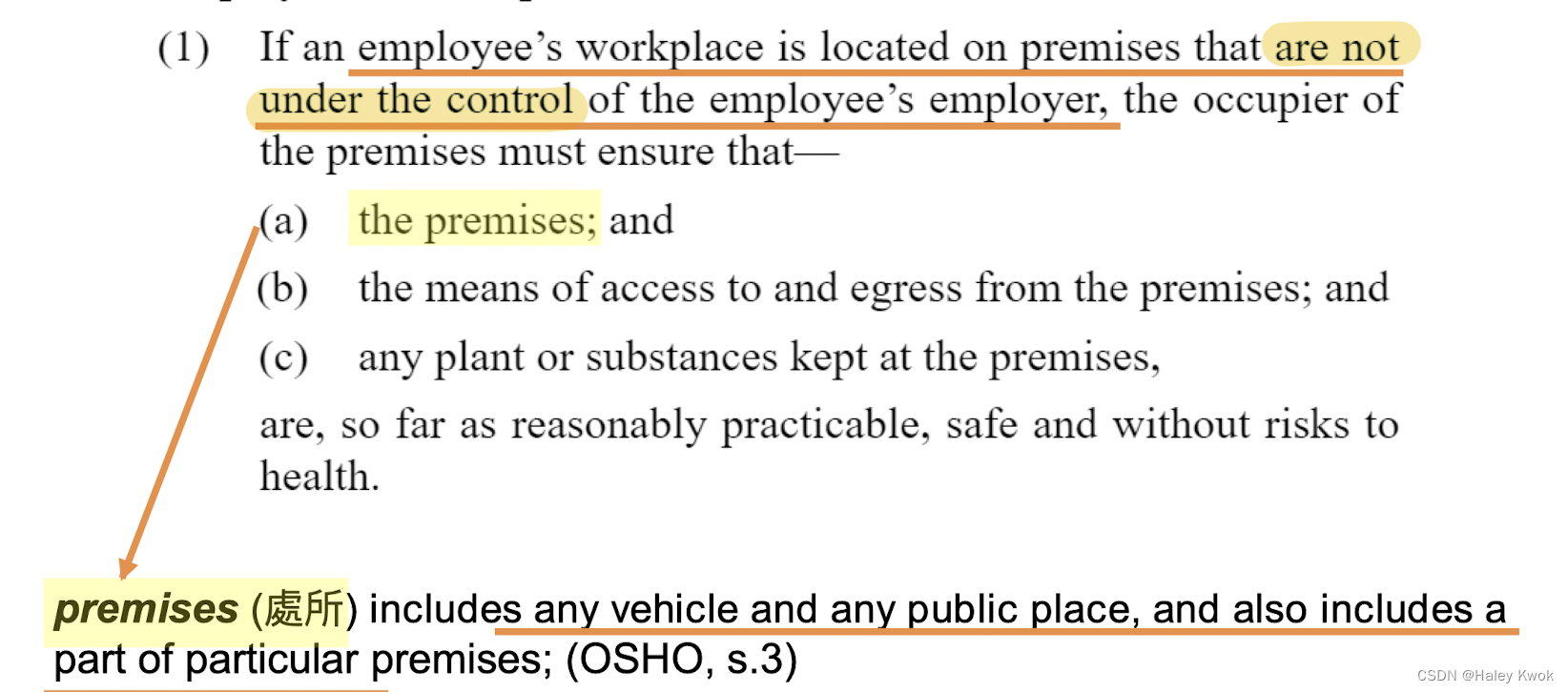
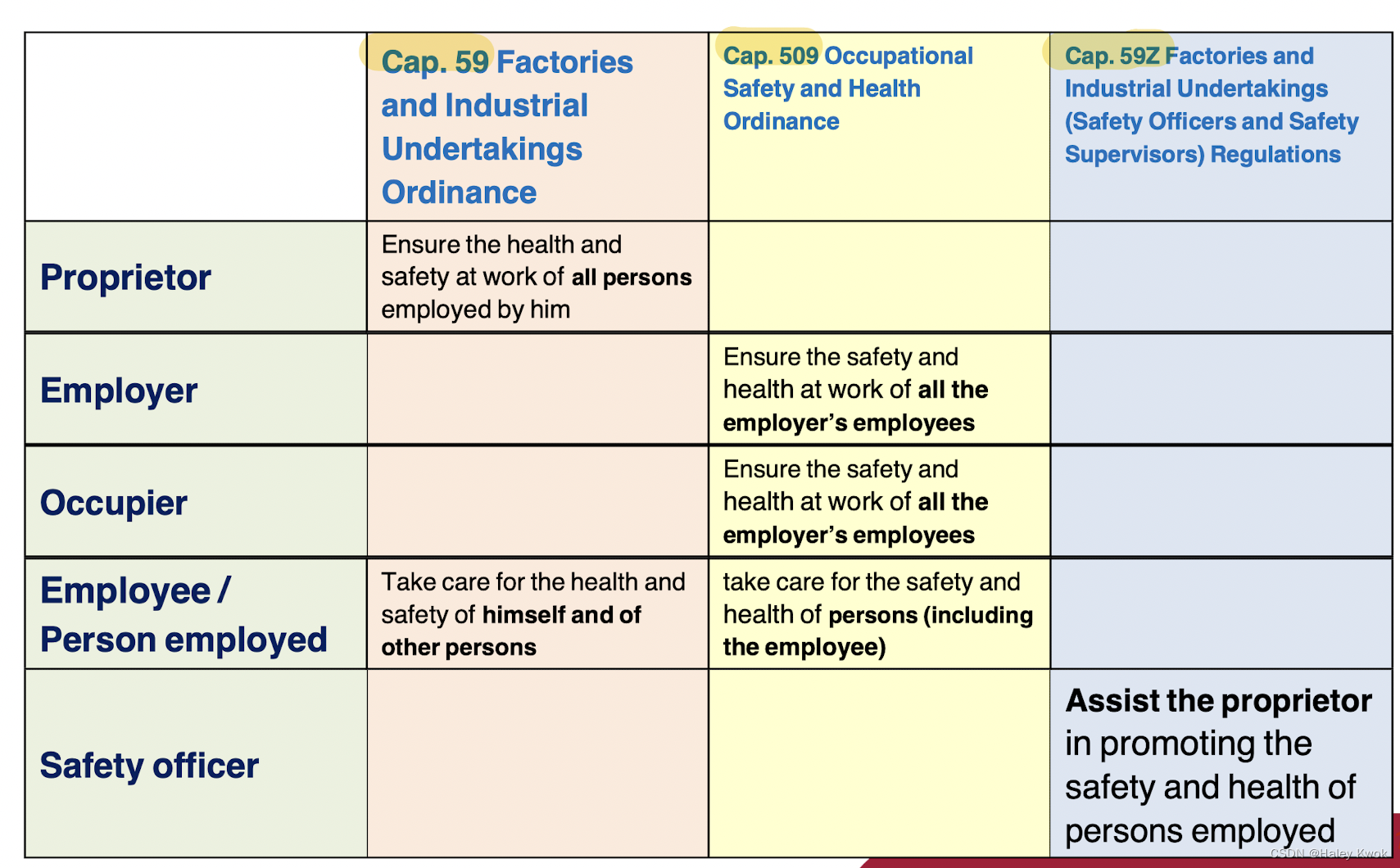
Approved Codes of Practice (CoP)
Practical guidance published and approved by
the Commissioner for Labour • A person does not incur a criminal or civil liability
only because the person has contravened a
provision of CoP • But, CoP is admissible in evidence in legal
proceedings
Mandatory Basic Safety Training (MBST)
Cap 59 6BA 2(a)(i) F&IUO
For a class of person employed at the industrial undertaking specified in column 1 of Schedule 4; – belonging to the persons specified opposite the undertaking in column 2 of that Schedule
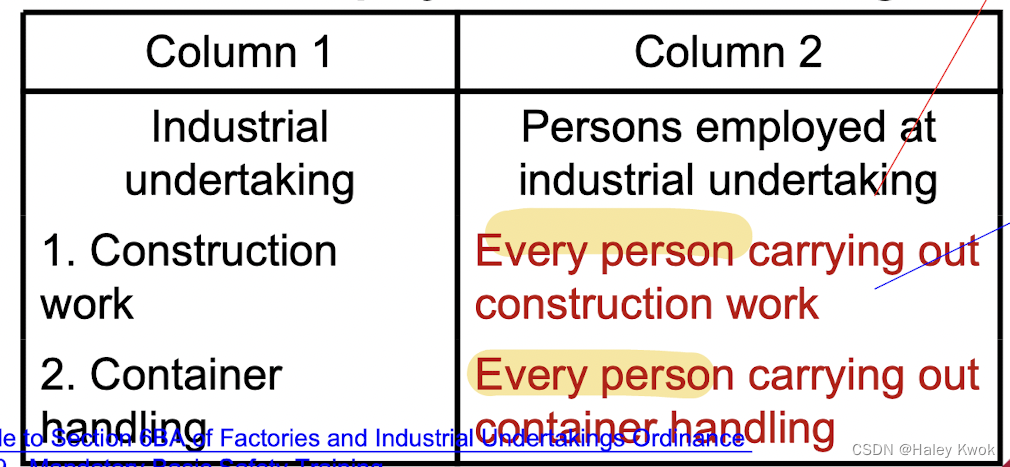
Employment of Safety Officer
Factories & Industrial Undertakings (Safety Officers and Safety Supervisors) Regulations, Cap 59Z requires
– 1 full-time Safety Officer registered under Labour
Department
– for construction site, shipyard (incl. ship building and repair), container handling with 100 or more workers
– As advisor and coordinator, not controller
– Duties of safety officer
(a) advising the proprietor as to measures to be taken …., with the approval of the proprietor, implementing such measures; (b) inspecting the industrial undertaking…. (c ) reporting the findings …. to the proprietor … (d) assisting in the supervision … …
Chapter 2: Personal Protective Equippment (PPE)
Definition of PPE
Any device or appliance worn by an individual for the protection against health and safety hazards
Hazards = Potential to cause harm
Risk Control Priority / Hierarchy of controls: Hazard Identification (Self-reading)
• People - Job allocation, experience, training, capability, human error;
• Machine – Design, installation, operation, energy, dangerous part of the machine, maintenance, accidental switch on/off;
• Material – Lifting, use, storage, disposal of material; chemical composition, mass, size, shape
• Method – Operation procedure, emergency situation and emergency handling
• Time – Length of exposure, working schedule, rest time, weather condition
• Space – Working space, working at height, confined space, work near sea, work on sea etc.
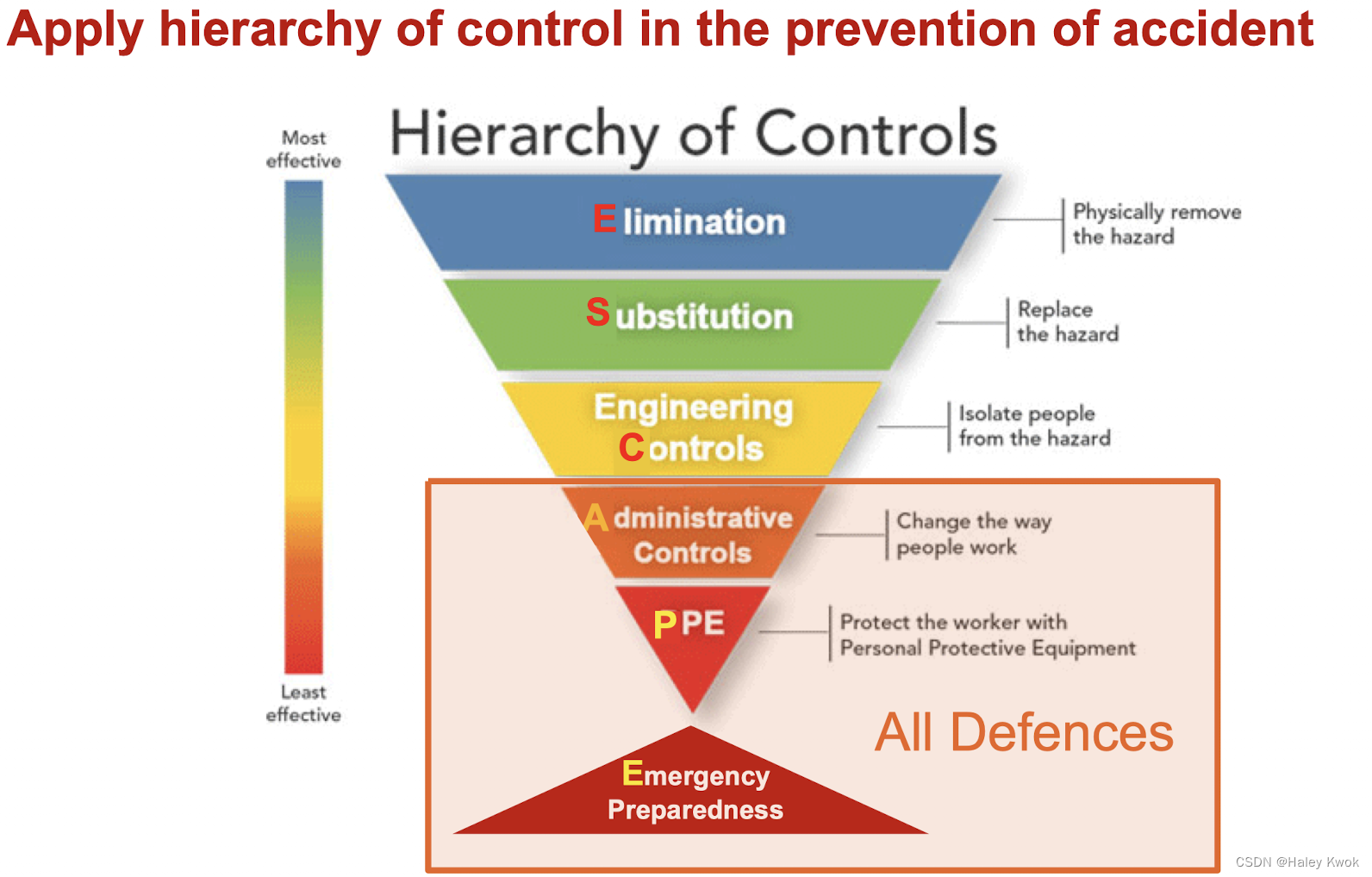
- hazard: work above the ground
- risk: may fall from height
Hierarchy of control measure: ESCAPE
- Elimination: Eliminating the hazard is most effective.
- Substitution: If hazard cannot be eliminated,
replace the machinery, substances or work processes with something less hazardous. - Engineering Control: Use
engineering solutionsto reduce the risk of injury or harm. - Administrative Control: Make changes to the way the work is organised such as
job rotation, work schedule, rules and regulations, providing instruction, training and supervision, safe work procedures such as permit to work. - Personal Protection: provide
personal protective equipmentas extra safety or as a temporary measure whilst other risk controls are being organized. - Emergency Preparedness:
A list of possible emergency situationssuch as fire, electric shock, explosion, hazardous chemical spills or releases, … etc. should be well prepared.
Types of PPE
Eyes Protectors
For protection against:
– Physical hazards such as flying objects
– Chemical hazards such as dusts, mists and splashes
– Radiant energy such as infrared, ultraviolet and lasers
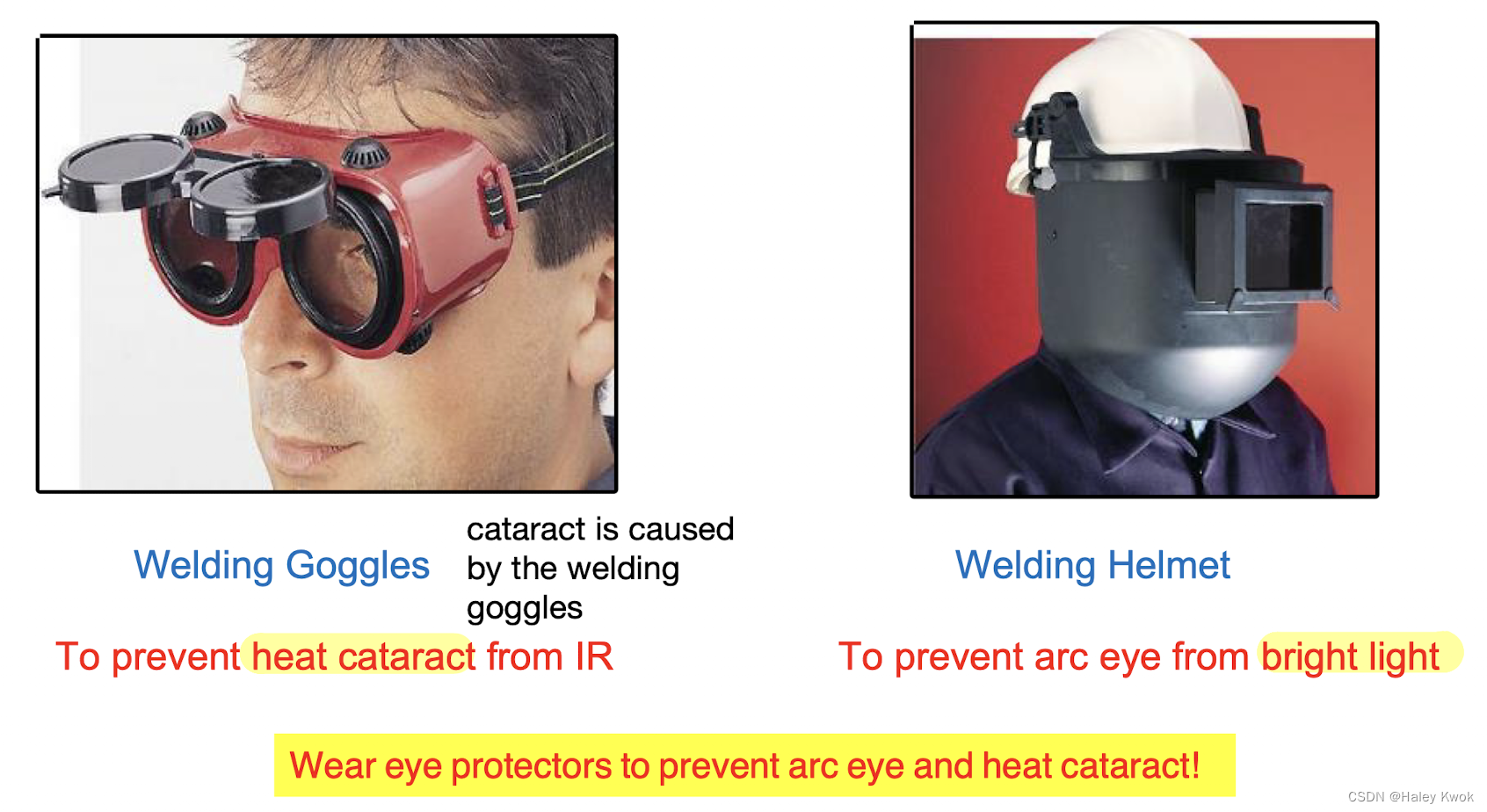
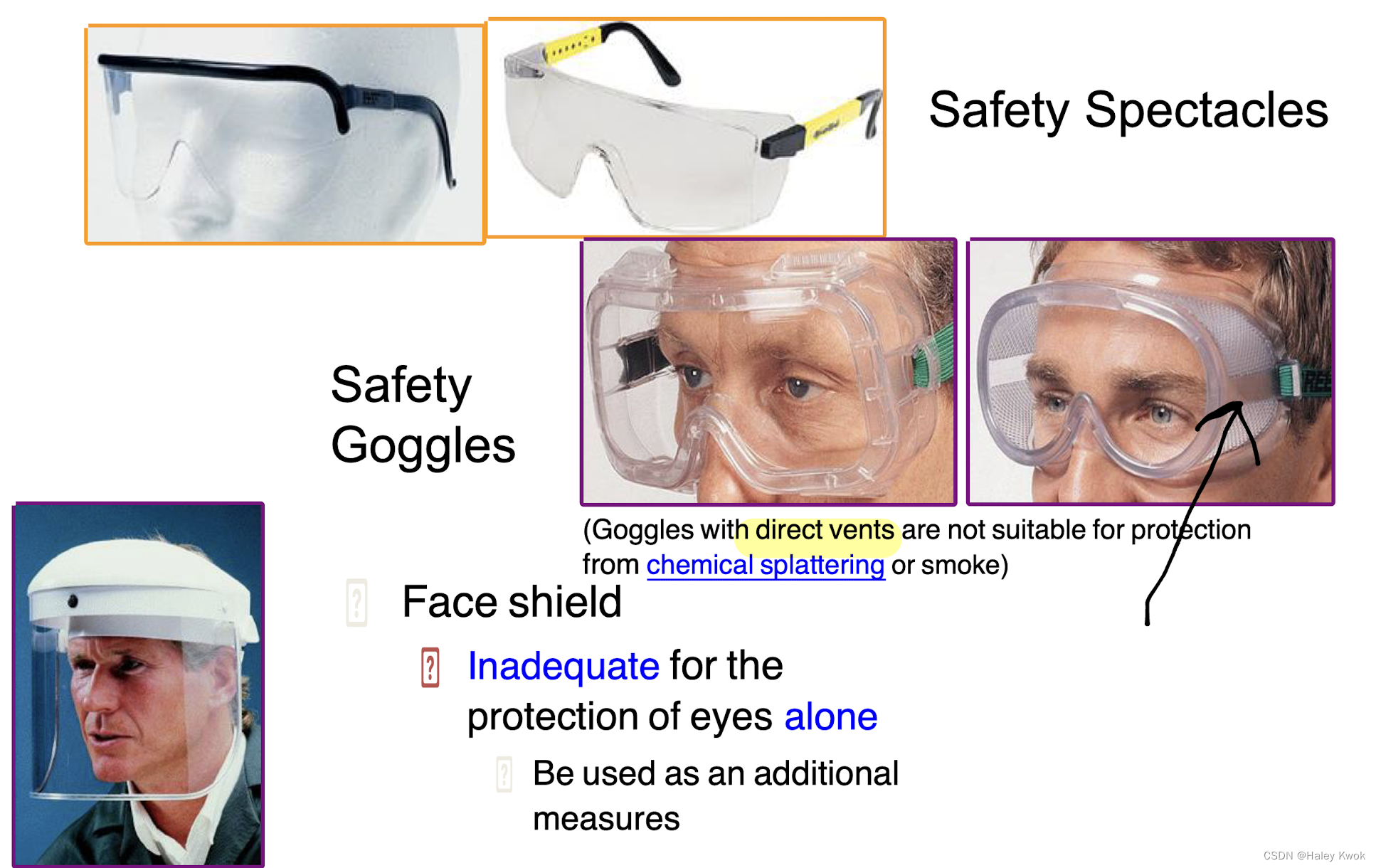
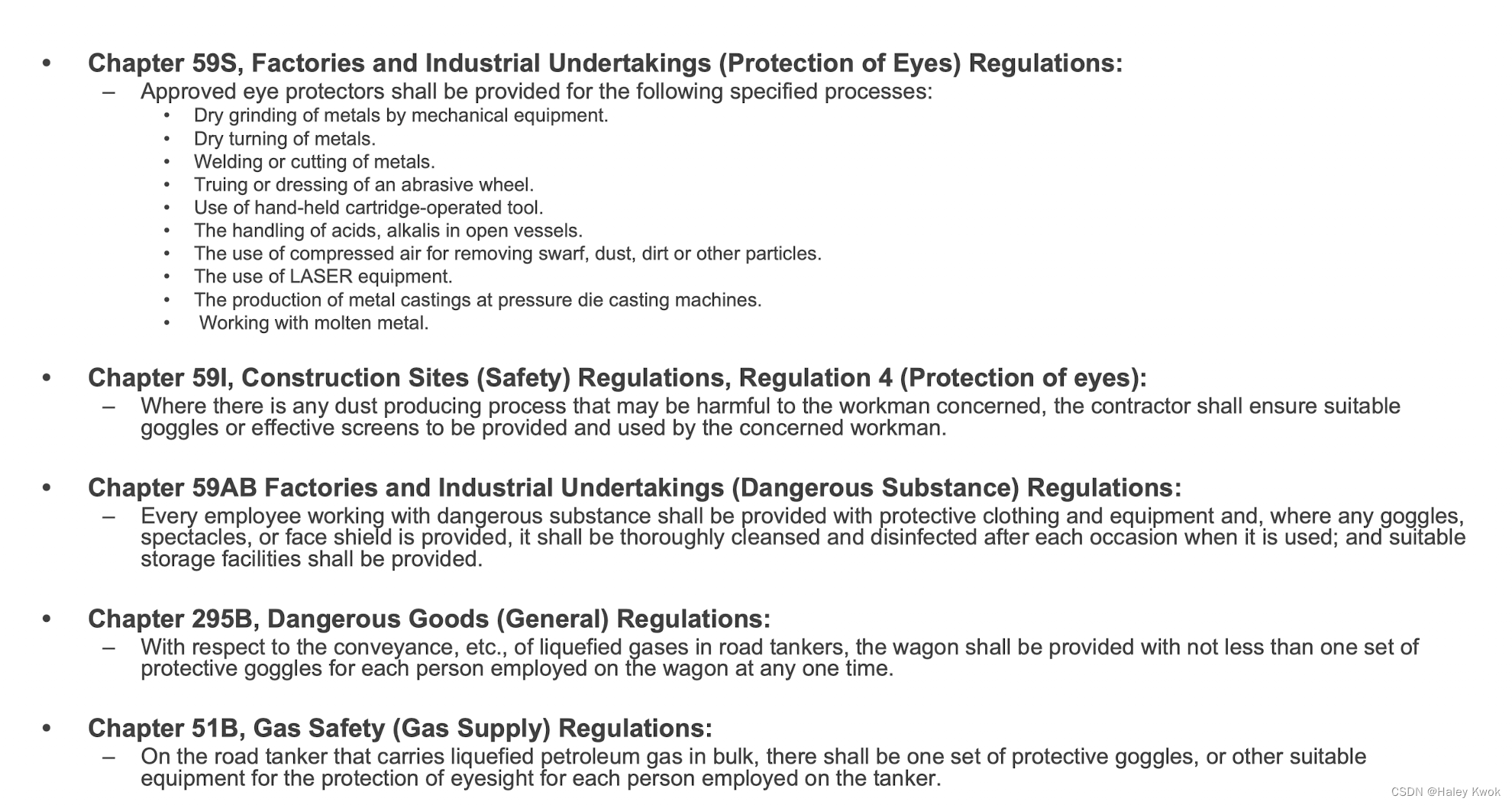
Hearing Protectors
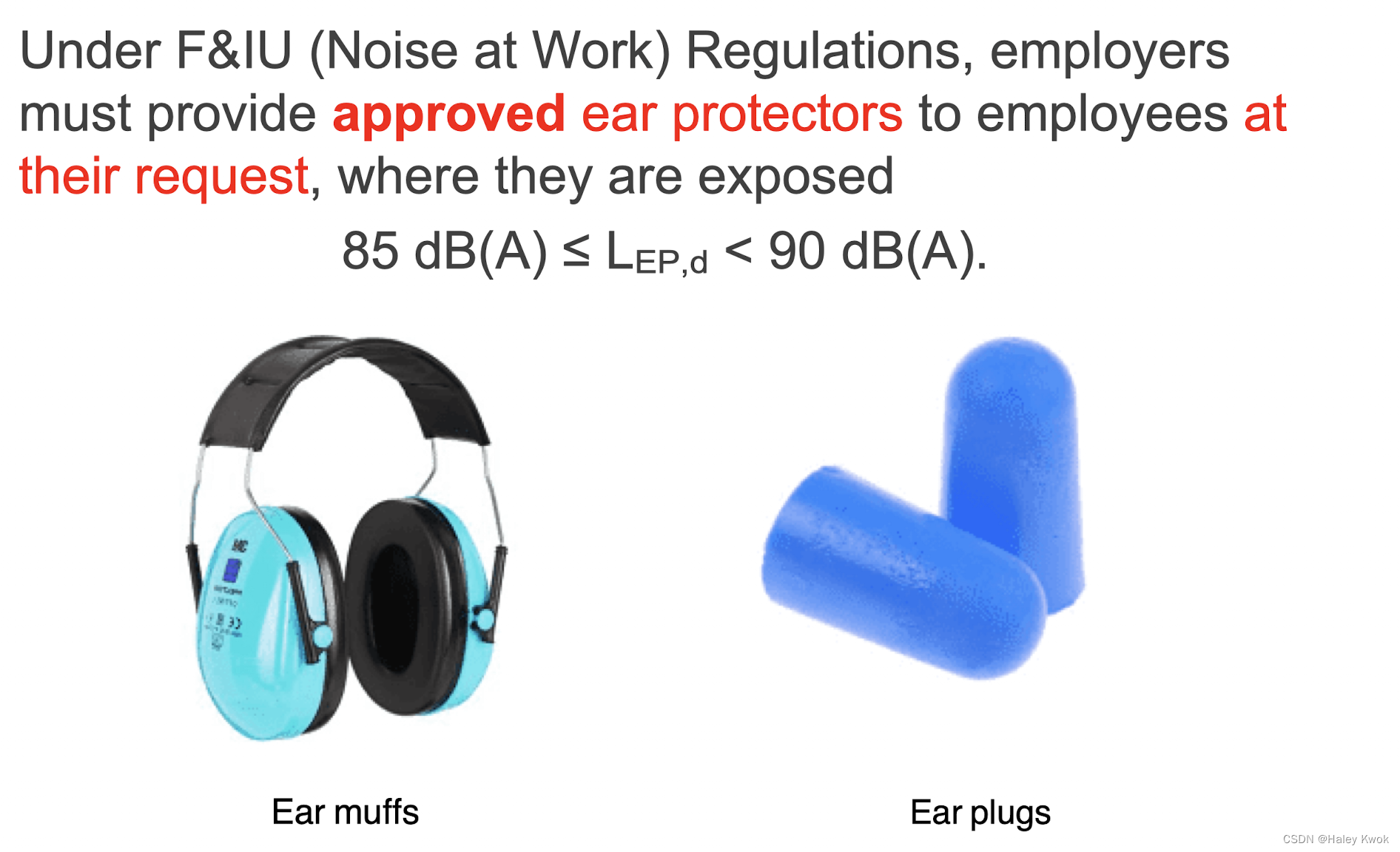
Respiratory Protector
Two main types of respirators
– Air-purifying respirators
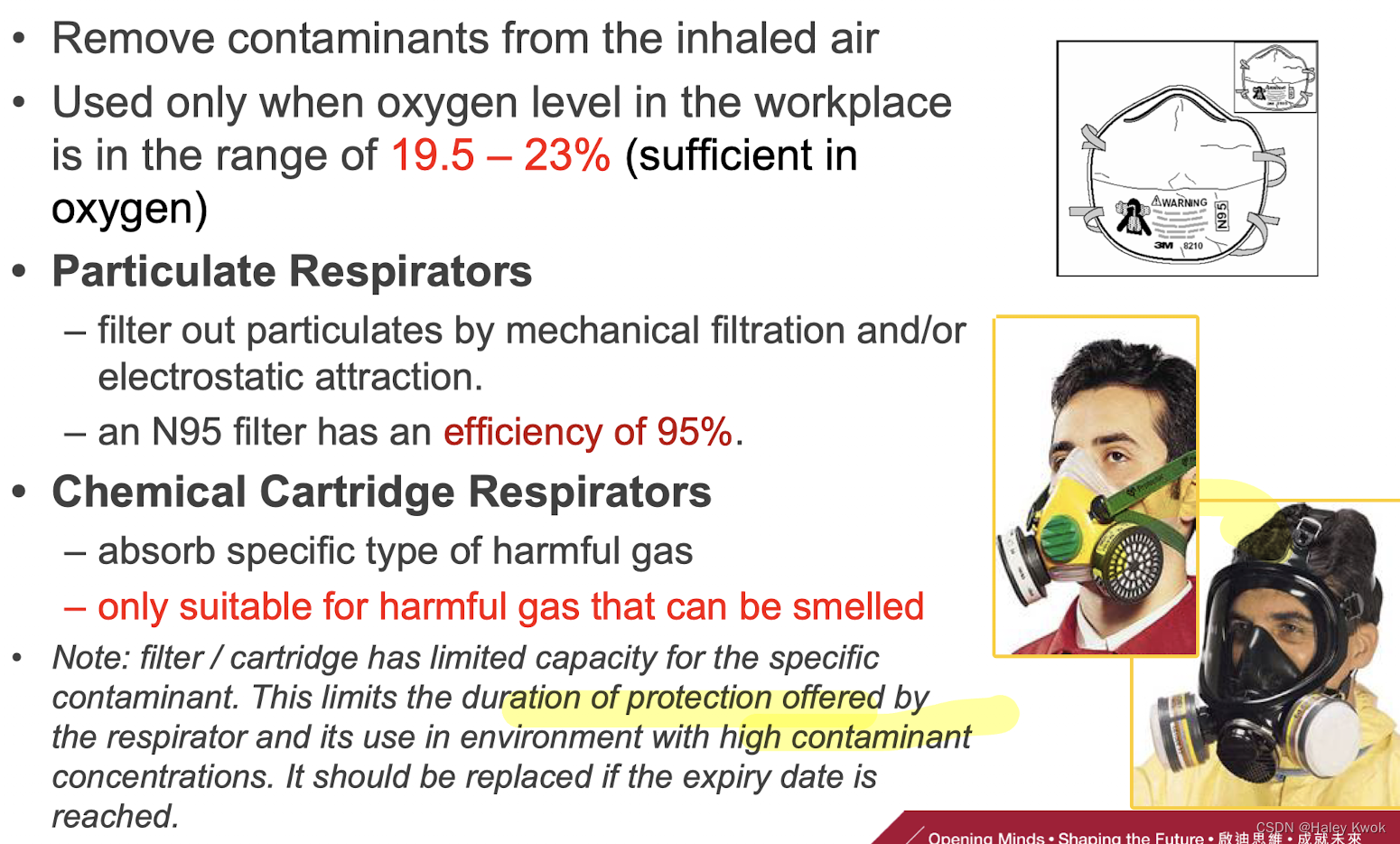
– Air-supplying respirators
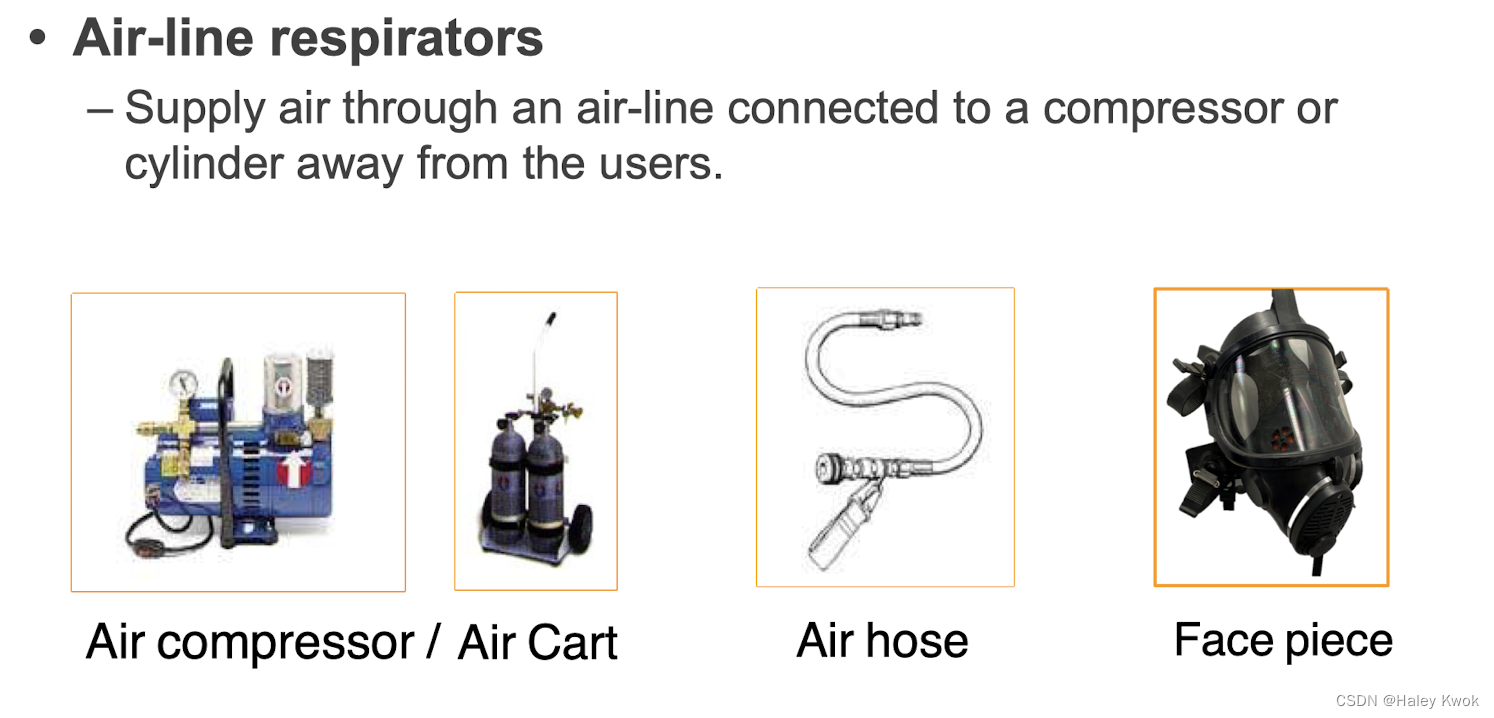
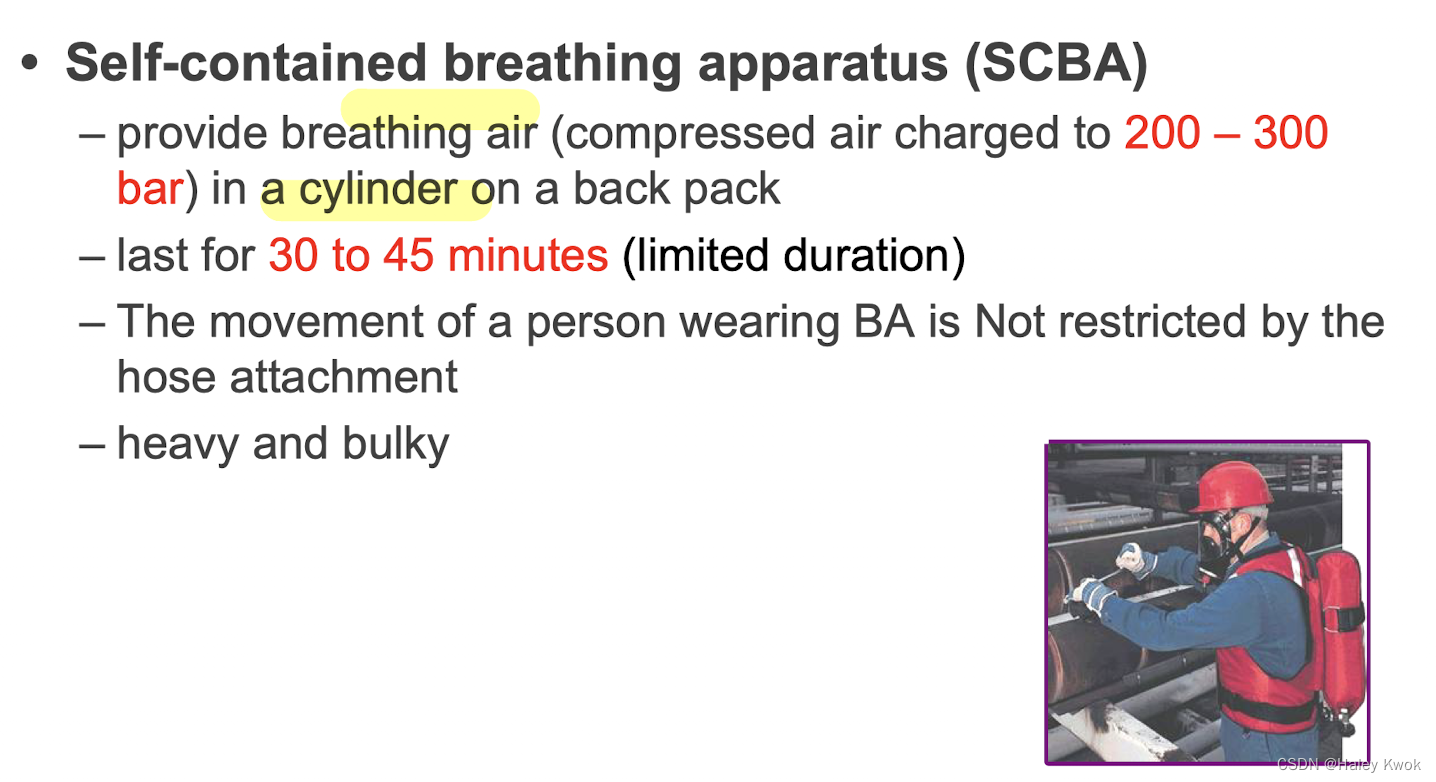
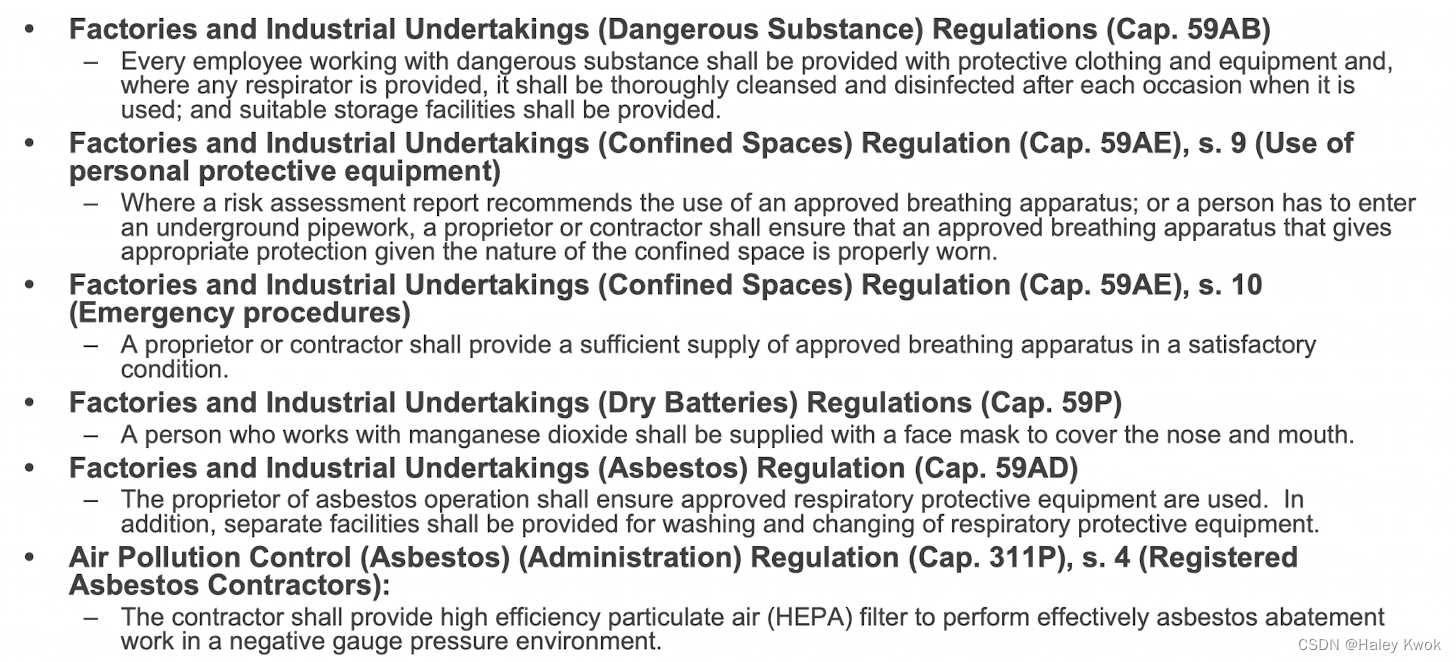
Head Protector
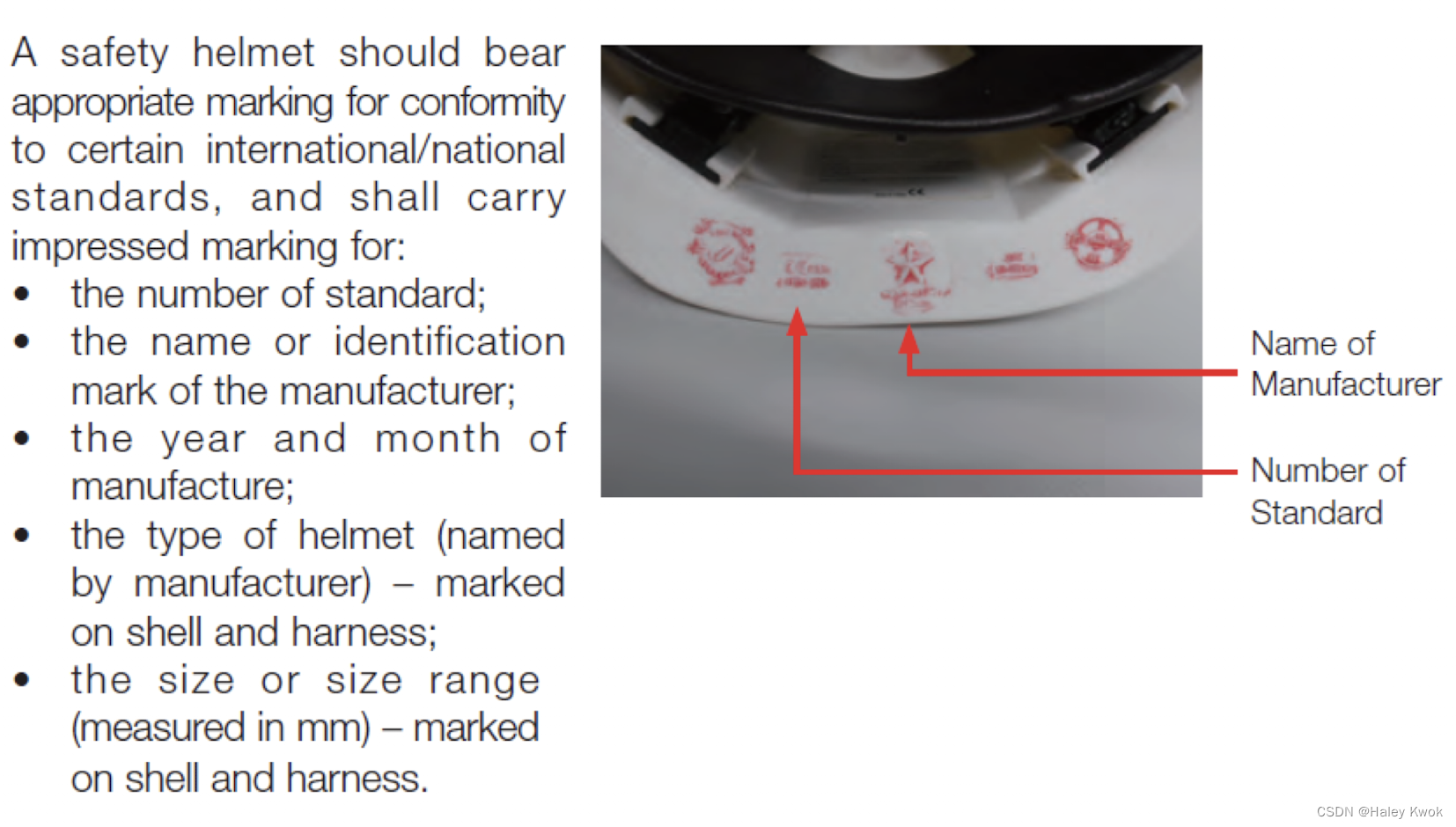
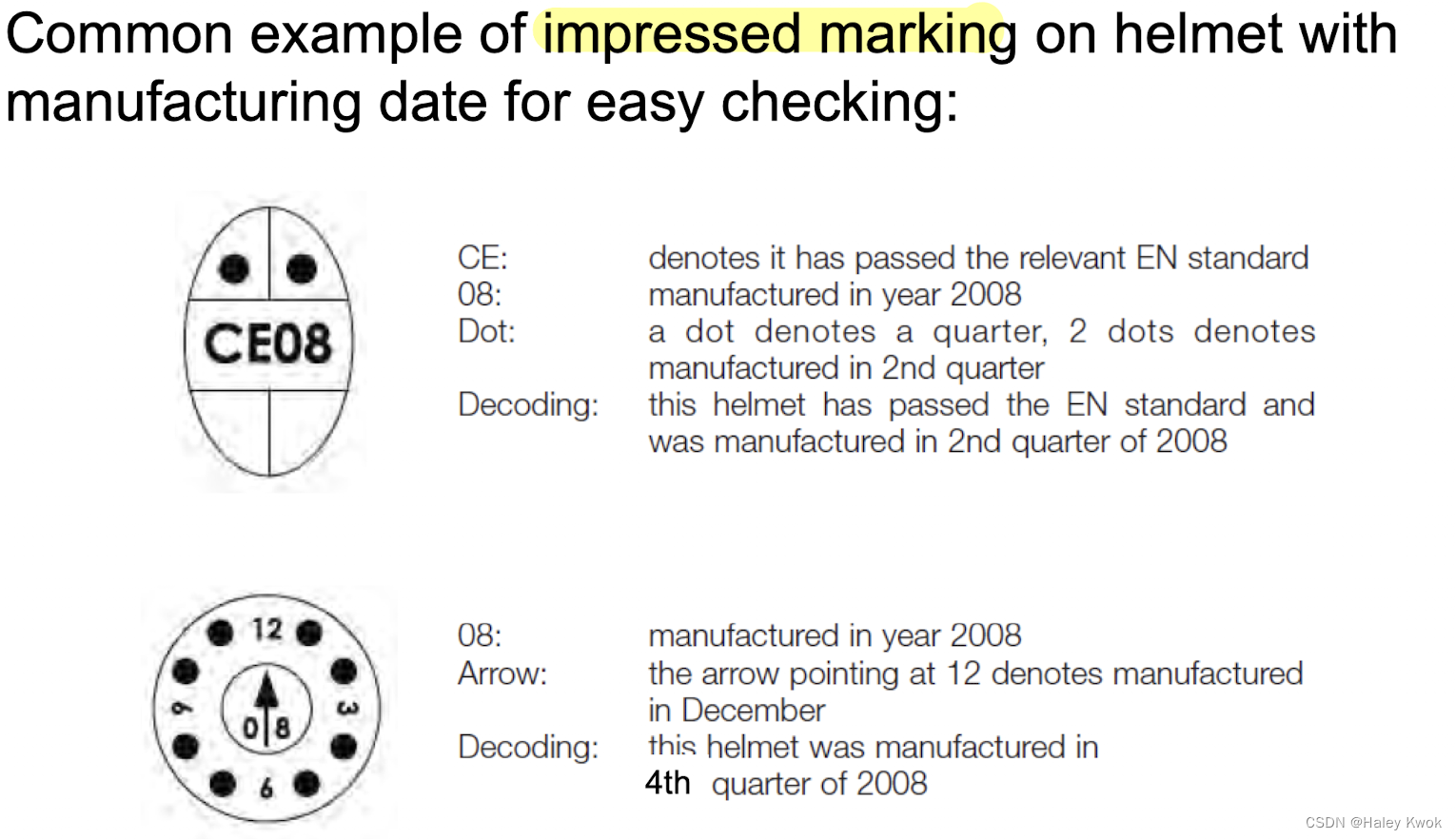
Helmet: Protection through hard shell and suspension system
• Hard shell deflect falling objects to the side
• Suspension system spread impact energy over a larger area & absorb energy by stretching
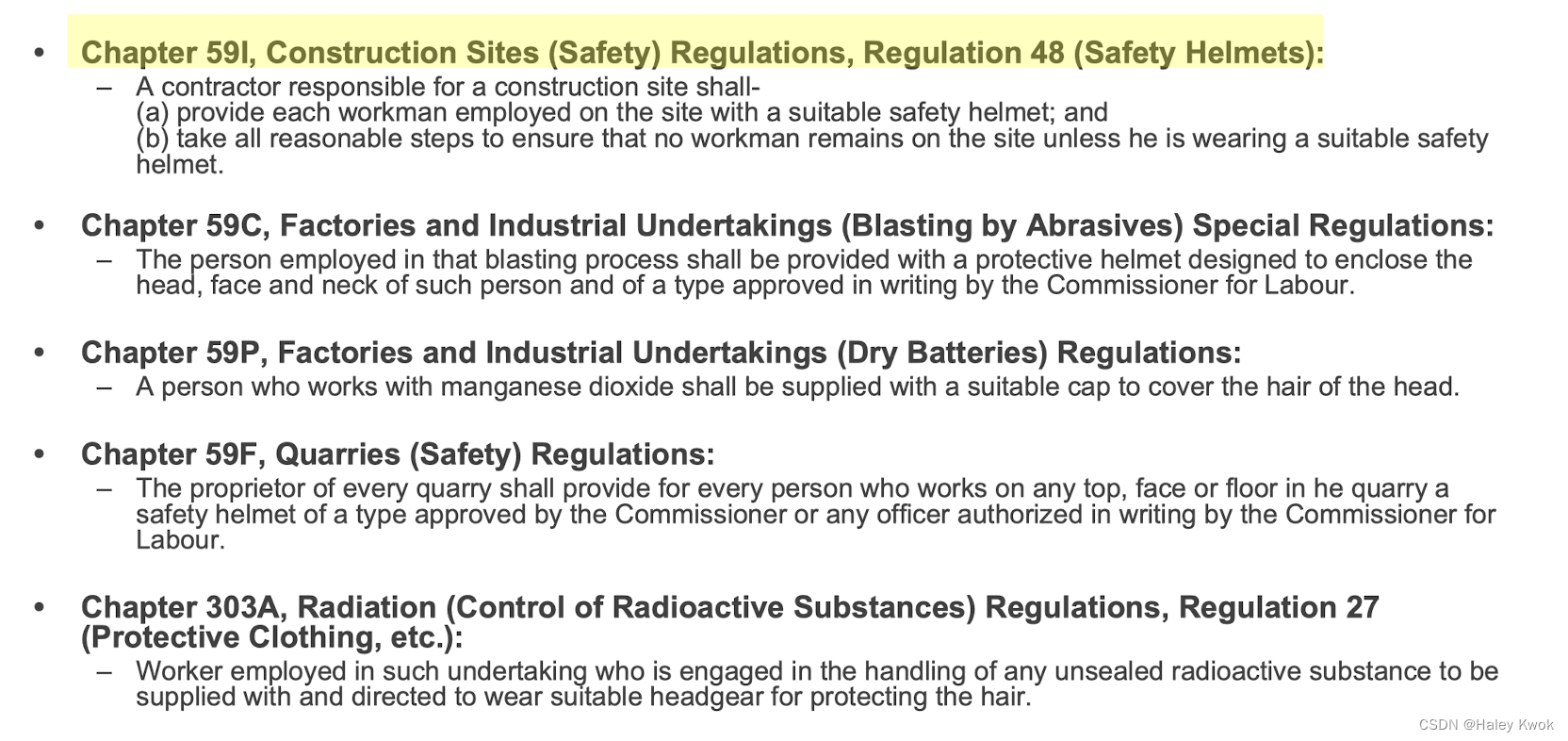
Body Protection
Limbs Protection
Foot Protection


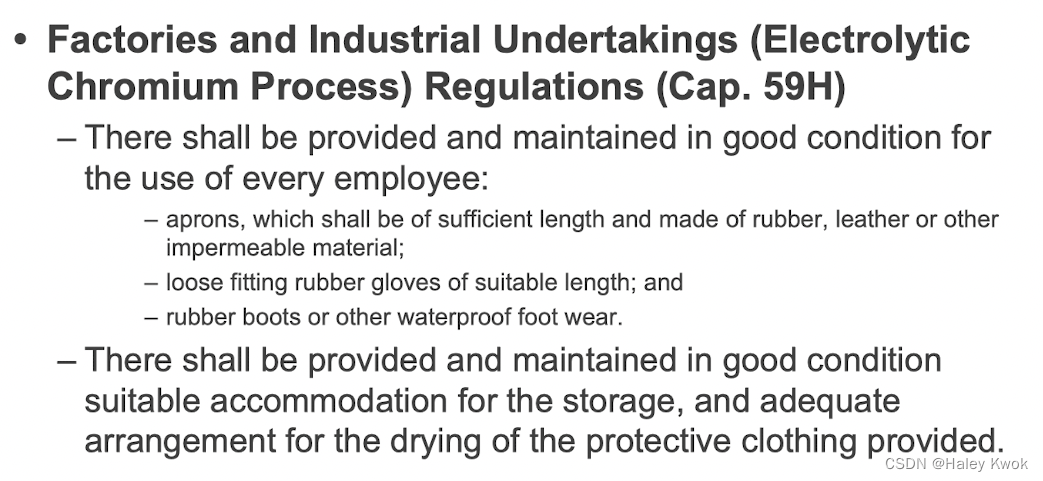
Fall Protection
Personal Fall Arrest Systems(PFAS)
– consists of an anchorage, connectors, and a body belt or body harness and may include a deceleration device, lifeline, or suitable combinations.
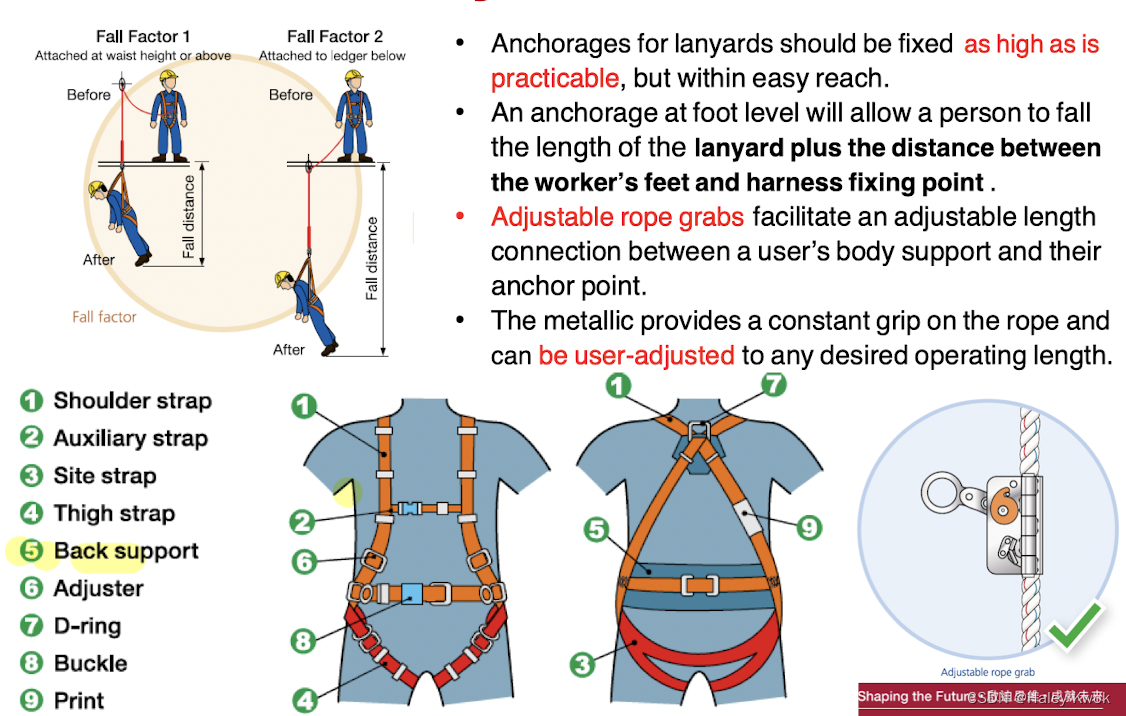
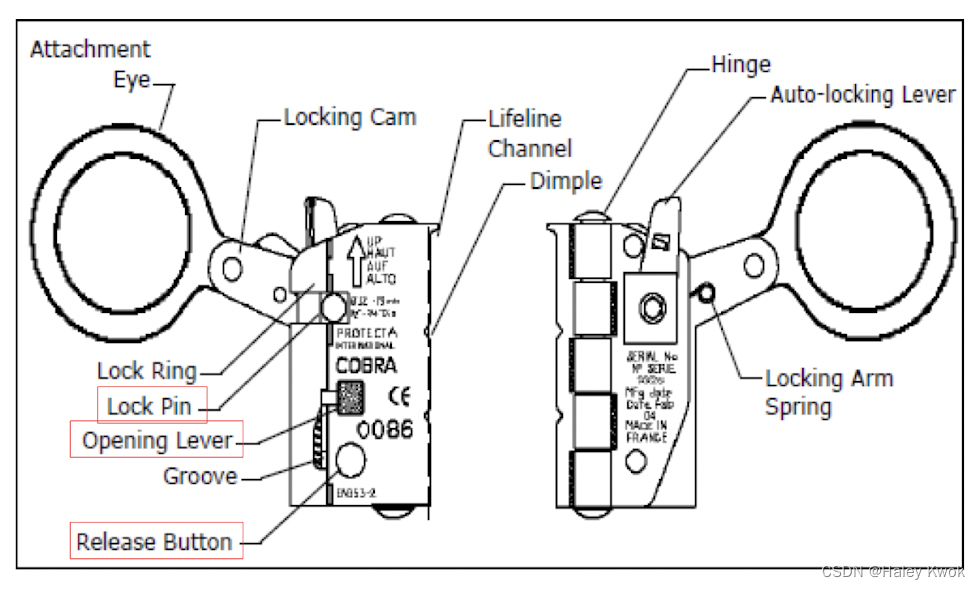
Hand Protection
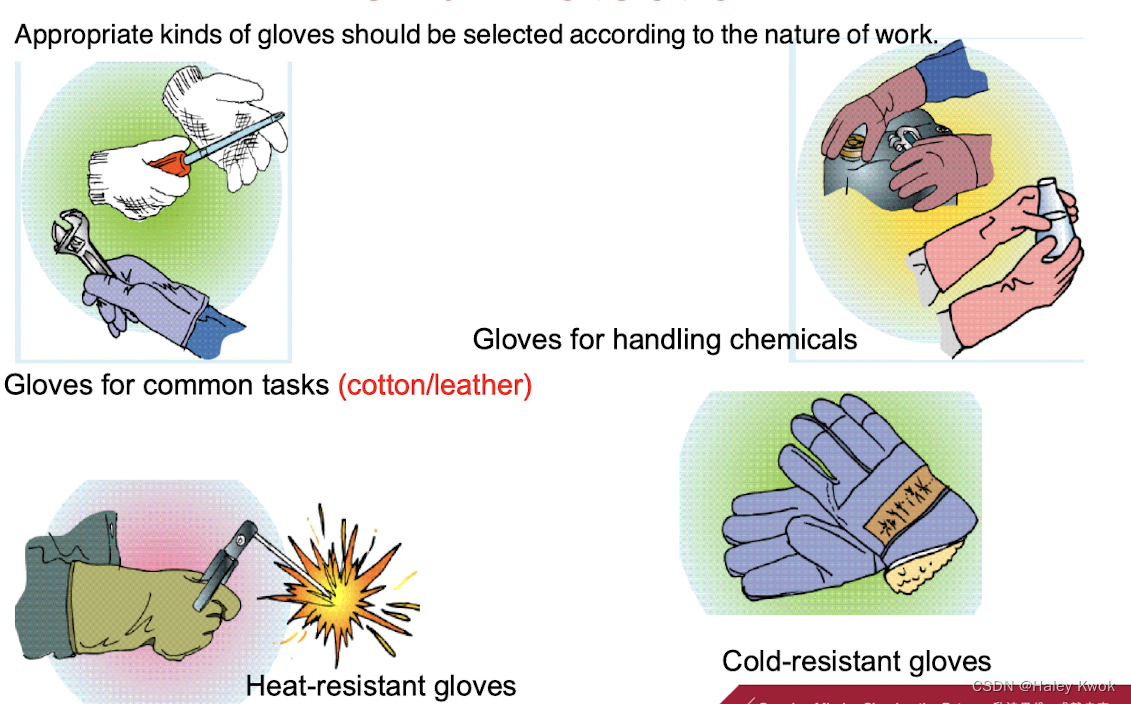

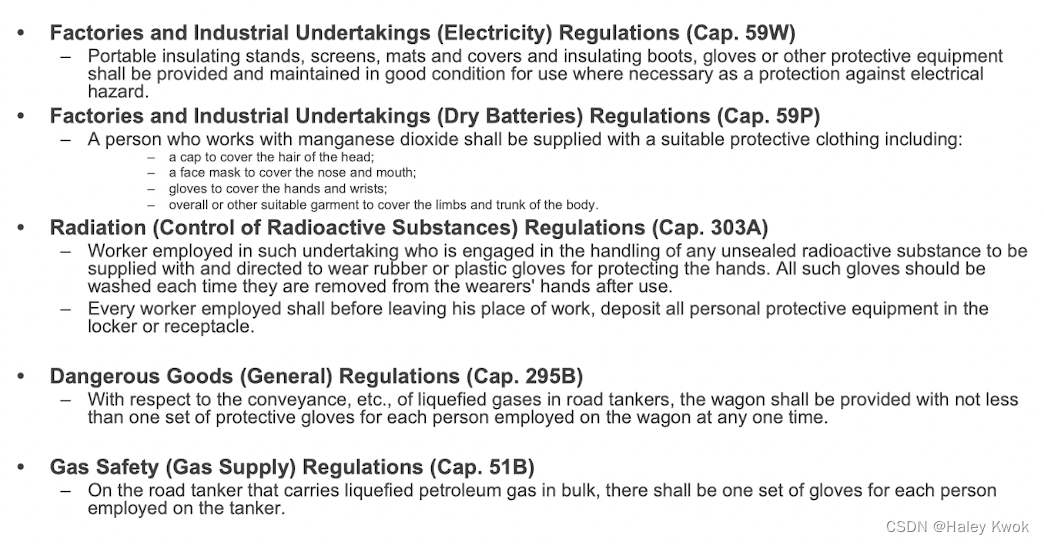
Selection of PPE
- Workplace hazard assessment
– What hazard exist in the workplace? Physical? Chemical? - Selection of PPE
– Legal requirement
– International standard
– Design of PPE (ergonomics in terms of fitness and comfort)
– Acceptability?
• Goggle VS spectacles in summer.
– Physiological burden?
• Use of SCBA (self-contained breathing apparatus - Supply of PPE
– Worn or damaged PPE should be reported to supervisors and replaced immediately - Use, maintenance and storage of PPE
– Be stored in clean, and dry designated location
– Be cleaned, disinfected, examined, repaired and tested
regularly - Supervision
– Ensure workers make proper use of PPE - Training, information and instruction
– should include:
• an explanation of the risks present
• factors affecting the protection provided by PPE;
• limitations of PPE;
• why and what PPE is necessary;
• where and when it should be used;
• how to properly don, doff, adjust, test, store and wear PPE;
• the proper care, maintenance, useful life and disposal of PPE;
• Monitoring the use of PPE
– Purpose to ensure selected PPE is effective in providing protection